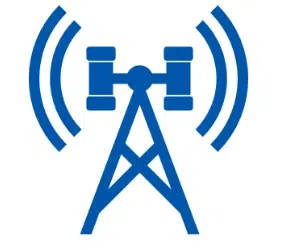Yes, you can often sublease space on a cell tower or rooftop to other wireless carriers, also known as colocation. Subleasing allows multiple carriers to share the same cell tower or rooftop infrastructure, which can be beneficial for both the property owner and the carriers. Here’s how the subleasing process typically works:
- Negotiation: Subleasing agreements are typically negotiated between the property owner and the wireless carriers interested in colocating on the tower or rooftop.
- Lease Agreement: The property owner, as the primary leaseholder, maintains the master lease agreement with the cell tower company or wireless carrier that initially installed the equipment. This master lease outlines the terms and conditions for the use of the space.
- Sublease Agreement: When additional carriers express interest in colocating on the tower or rooftop, sublease agreements are established between the property owner and each carrier. These sublease agreements typically address rent payments, space allocation, access rights, and any other specific terms.
- Space Allocation: The master lease and sublease agreements define how the available space is allocated among the carriers. The tower or rooftop infrastructure may be divided into separate areas or vertical levels for each carrier’s equipment.
- Access Rights: Subleasing agreements specify access rights and responsibilities for each carrier. This includes provisions for equipment installation, maintenance, and repair, as well as access to the site.
- Rent Payments: Subleasing carriers typically pay rent to the property owner for the use of the space. Rent amounts can vary based on factors such as the location’s desirability, equipment size, and market conditions.
- Master Lease Terms: The terms of the master lease between the property owner and the cell tower company or wireless carrier are often extended to subleasing carriers. Subleasing carriers must comply with the master lease’s terms and conditions.
- Regulatory and Zoning Compliance: Subleasing carriers must also adhere to local regulatory and zoning requirements. Compliance with safety and environmental regulations is crucial.
- Insurance and Liability: Subleasing carriers are typically required to carry liability insurance to cover potential damages or accidents associated with their equipment.
- Technical Considerations: The tower or rooftop must be capable of accommodating the additional equipment and antennas without compromising structural integrity or interfering with existing equipment.
Subleasing space on a cell tower or rooftop can be a mutually beneficial arrangement. It allows property owners to generate additional revenue from their existing leases while enabling wireless carriers to expand their network coverage without the need to construct new towers or infrastructure. However, subleasing agreements can be complex, and it’s essential for property owners and subleasing carriers to carefully negotiate and document the terms to ensure a successful and compliant colocation arrangement. Consulting with legal and real estate professionals experienced in cell tower leasing can be valuable in this process.
